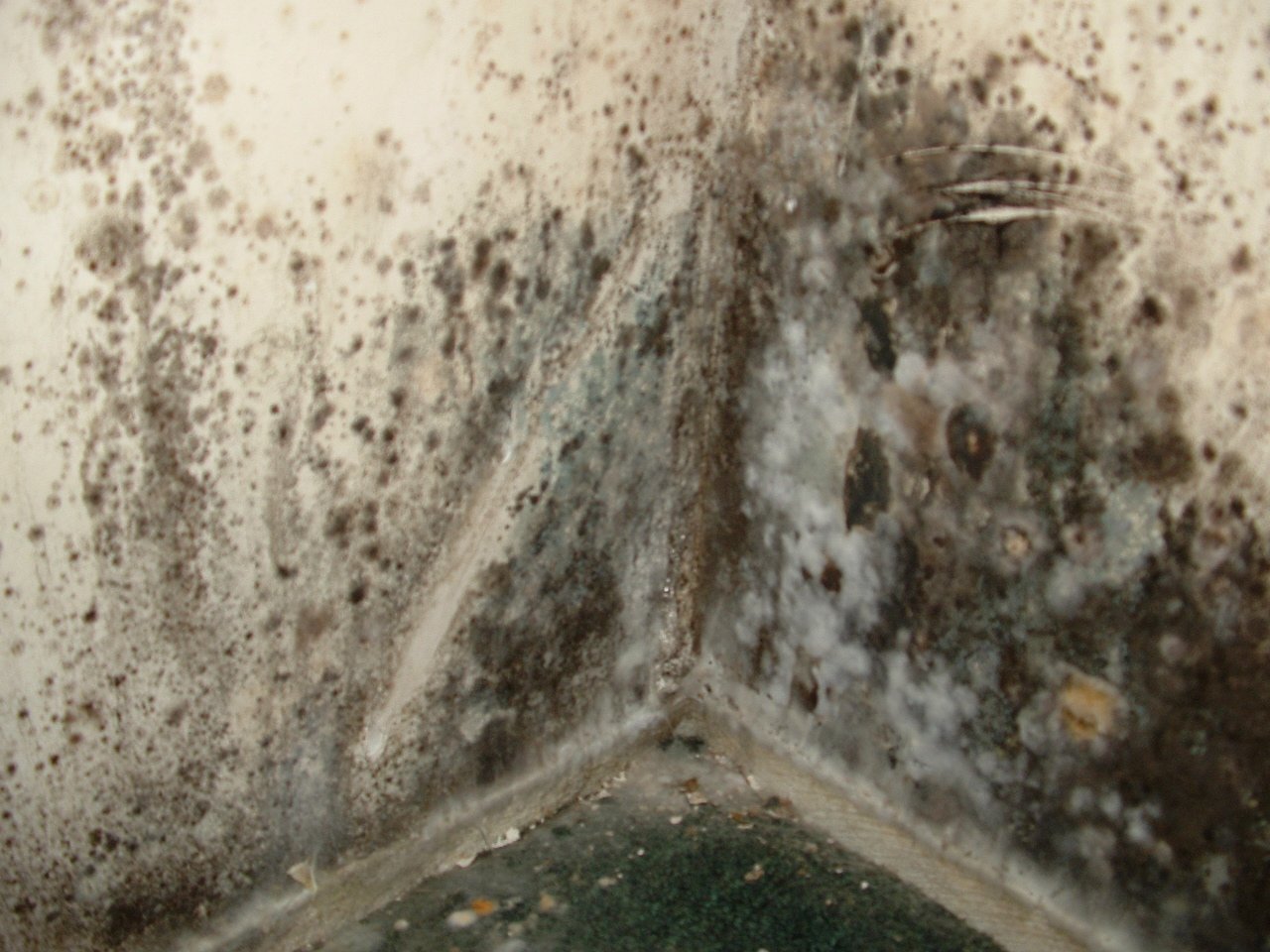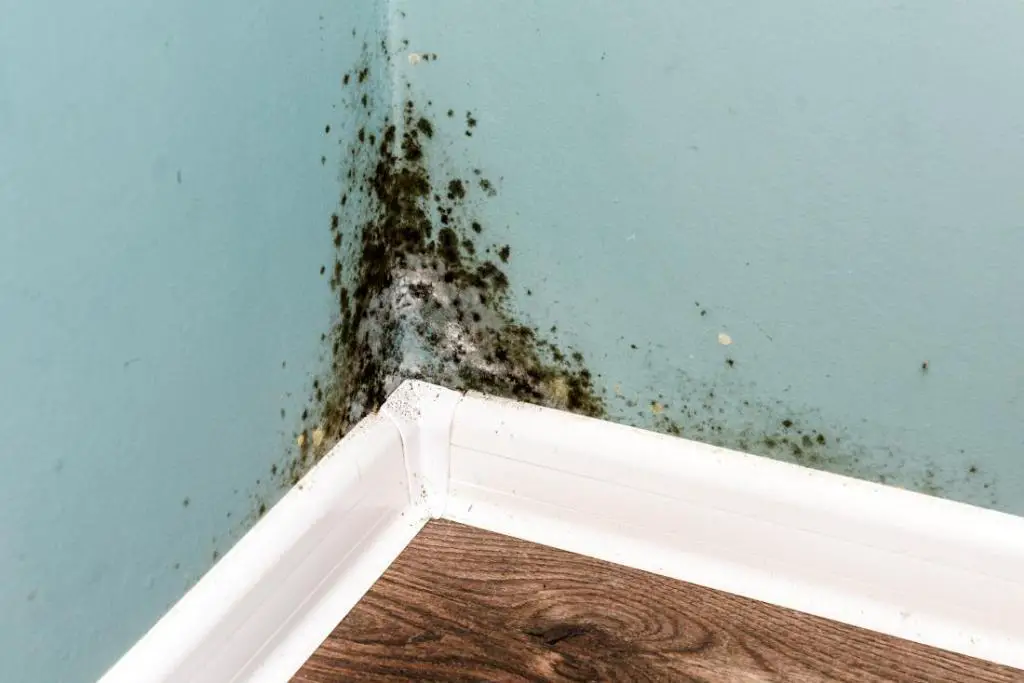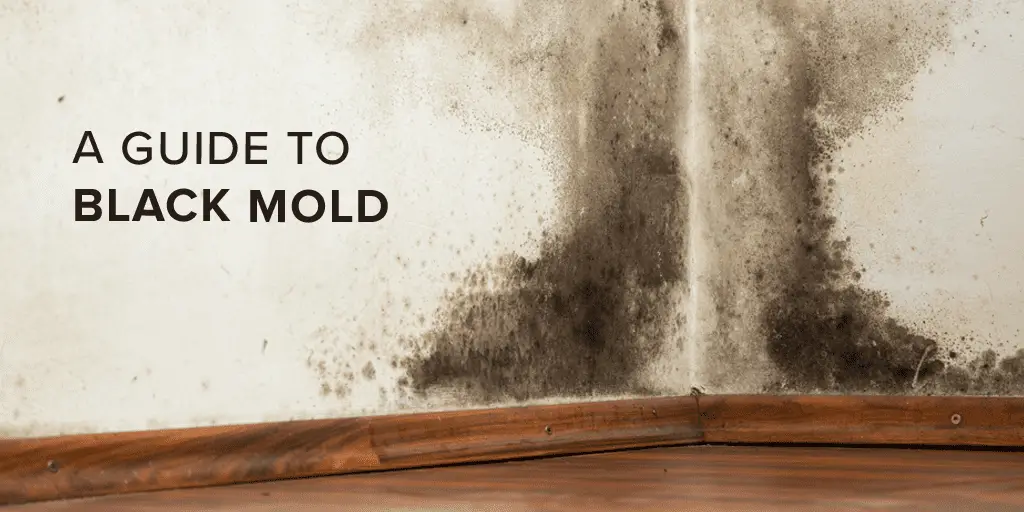How To Get Rid Of Mold
Just as there are many types of mold, there are numerous removal methods. The best option for your situation will depend on what type of mold youre encountering, the surface that its on and the extent to which it has spread.
In some cases, it may be necessary to call an expert when it comes to home mold removal. DIY mold removal is only possible depending on the size and impact the mold has made.
If you choose to handle the mold removal yourself, make sure to don adequate protective gear. The CDC recommends that you wear long pants and a long-sleeve shirt, protective gloves and eyewear, waterproof boots and a mask rated at least N95 or more to protect your nose and mouth. Note that while these masks protect you from small particles like mold, they are not adequate if you are encountering any sort of gases, chemical vapors, asbestos or lead.
How To Remove Mold From Drywall
How the problem is handled on drywall depends on the condition of the sheet rock itself. If the material is unpainted or unsealed it is much more porous so it will absorb the spores right through to the back of the surface. In most situations, if you have a problem on the outside of sheetrock, it is probably on the inside as well. If you find it on unsealed sheetrock, the only thing you can do is remove the section that is affected and replace it. It is important to cut out a large enough section of the sheetrock to expose the wood behind it. Molds cannot be removed from insulation, so completely removing and replacing it is necessary.
How Fast Does Black Mold Spread
Mold begins to grow as soon as its spores land on a damp, fibre-rich material and it can spread around the house within 24 to 48 hours. It colonizes in one to twelve days and grows at one square inch per day. In less than a week, it can cover surface areas of several square feet.
Unfortunately in most cases, mold is widespread and already a big problem before a problem is even suspected by the homeowners.
You May Like: Clean Mold From Leather
Do I Need Professional Testing
In short, usually not! Because, remember the saying: no mold, no matter what color, belongs in a healthy home. And that is good news because a professional mold inspection with testing can run anywhere from $300-$750. In most cases where mold is clearly visible, knowing exactly what type of mold you have is unnecessary. We advise most of our clients to forgo the inspection process and just apply that money saved to the cost of fixing the problem. The EPA agrees that mold testing isnt necessary in most cases.
There are exceptions, however, such as when a mold inspection with testing is required as part of a real estate sale or if you require proof that a mold problem is present, such as for a legal dispute. If you think you may have a mold problem, but arent sure, then we recommend formal testing from a professional. And if you require clearance testing to verify an all clear after a mold problem is fixed, then professional mold testing is necessary.
Black Mold Exposure Symptoms

Symptoms of exposure to black mold are similar to symptoms that can occur with exposure to many types of mold. Most commonly, these symptoms include coughing, sneezing, itchy eyes, and irritated throat and nasal passages. Exposure to black mold has also been reported to cause chronic fatigue, headaches, dizziness, nausea, and vomiting. Those with allergies to mold are of course more likely to be affected by mold exposure.
As is usually the case, children, the elderly, and those with weakened immune systems are at greater risk of experiencing adverse reactions to mold. Black mold exposure may cause asthma in children who live in an infested environment, and can cause pneumonia in older, susceptible individuals. Fungal infections can also occur upon exposure to mold.
Read Also: How To Clean Mold Off Bathroom Ceiling
Should I Move Out If I Have Black Mold
Ultimately, you should always prioritize your health above all else. If you have black mold in your house that is contained in a small enough area to be sufficiently removed, its likely that this will solve the issue .
Black mold is, however, a fungus that spreads and grows through its microscopic spores that permeate beyond where we can see. One of the trickiest aspects about this problem is that often people dont even realize that its growing inside their home until they start wheezing. And even if you clean it off, no longer seeing it in your home might not be enough to ensure your safety.
If you have a respiratory condition or simply dont feel comfortable regularly occupying a space that could be fostering black mold, either employ a removal expert to get rid of it or ask your landlord/building manager to get it removed. If you cannot get it removed, you may want to consider moving house for the sake of your health.
Mold On Wooden Furniture
Fungi spores are a constant part of our indoor and outdoor surroundings. Unfortunately, they carry no good with them. Your wood furniture may come under attack from these fungi eventually causing damage as well as health complications. Wood furnishings are high prone victims of mold attack if exposed to certain temperatures and moisture levels. Mold survives on any cellulose-based matter, in which wood furniture provides. If any of your outdoor or indoor wooden furniture starts to home fungi, you might want to know how to remove it.
Don’t Miss: Mildew Bathroom Ceiling
How Do You Get Rid Of Mold With Vinegar
You should assess the intensity of the mold growth before attempting any cleaning. Substantial growth will call for cleaners to get rid of the mold. However, for a small mold problem, you may consider it as a simple DIY task using white vinegar.
- Step 1: Protect yourselfEnsure that you have white vinegar in your home. Wear protective clothing to cover your hands to avoid prolonged exposure to vinegar. Cover your mouth, eyes, and nose as well to avoid breathing in the mold spores.
- Step 2: Fill a Spray Bottle with VinegarFind a spray bottle and fill it up with the white vinegar. Use concentrated vinegar as mold can be a resisting force. Also, ensure that you have an adequate amount of white vinegar to spray on the surface that requires cleaning.
- Step 3: Spray the Vinegar on Affected AreasSpray the affected area thoroughly with vinegar. Ensure that the area is well covered with vinegar. If you dont have a spray bottle, you can use a wet cloth soaked in vinegar to scrub the affected area.
- Step 4: Allow the Vinegar to SoakIt takes a little time for the vinegar to absorb and break the mold. Thus, you can let it sit for about an hour before you begin scrubbing.
- Step 5: Scrub the Mold AwayUse a brush with warm water to scrub off the mold. The scrub brush will make it easier to break the mold. Use an appropriate brush size to clean the area. Rinse and wipe the affected area with warm water. If the mold persists, you can repeat the processes or hire a professional.
Contact A Specialist That Handles Black Mold To:
- Get a free assessment of your situation, including a complete inspection of your home in order to locate all areas of mold growth.
- Verify if the mold in your home is in fact black mold, so you can let your physician know exactly what substances youâve been exposed to.
- Get customized information that will help you do the job right if you decide not to hire a specialist.
Don’t Miss: How To Kill Mold In My Basement
How To Remove Mold From Plaster
- Use a non-ammonia based soap, mixed with water
- Dip a stiff bristle brush or push broom into the cleaning solution and scrub the plaster, using a âWâ motion .
- Using a garden hose for large exterior walls or a sponge for smaller interior walls, thoroughly rinse the wall.
- Allow exterior walls to air dry and use a large bath towel to dry interior walls.
How To Remove Black Mold
Learn how to remove black mold safely and effectively.
A detail shot of disgusting hotel shower bathroom tile sealant with mold and mildew.
Black mold can be an insidious problem for homeowners, potentially leading to a costly removal process and even a host of health problems. But by learning how to get rid of black mold safely and effectively, you can protect the health of your family and the value of your home, without breaking the bank.
Removing black mold is a step-by-step process that requires patience, an investment in protective gear and black mold removal products, and, of course, the courage to brave dark, cramped spaces inhabited by toxic fungus.
First, you must remove the source of any moisture from the affected area. If any leaks or persistent condensation aren’t alleviated, the mold will likely reappear after removal.
Next, seal any doorways or other openings leading to other areas of the home, place heavy plastic over them, then seal the plastic in place with duct tape. If there are outdoor openings in the room, place an exhaust fan near them to help remove mold spores from the room.
You May Like: How To Clean Mold From Leather
Scrub Moldy Surfaces With Mold Cleaner
- Scrub the surface mold stains from walls and wood trim with a mixture of one quart water and 1/2-cup bleach mold cleaner to kill the mold.
- Use a soft brush and work until signs of the mold disappear.
- After scrubbing the surfaces, allow the bleach solution to continue to penetrate the surfaces and dry.
- Wipe off, but DO NOT RINSE these surfaces.
- Set trim in direct sunlight to dry. Scrub concrete with TSP or automatic dishwasher detergent.
Watery Or Irritated Eyes

When allergens are present, the body releases histamines as part of its immune response. This histamine release is what causes the eyes to water excessively when exposed to toxins from mold.
This reaction from histamine may be the bodys way of flushing out allergens and toxins. It can serve as a warning to you that your environment may contain dangerous black mold.
Recommended Reading: What Causes Mold In Bathroom Ceiling
Growth Spots Of Varying Colors
Black mold, as the name implies, is often dark in color. When searching for black mold, look for circular-shaped spots that are black, dark green or dark brown. Some black mold can also take on shades of orange or have flecks of white within it.
Most of the time, black mold has a slightly furry appearance. Larger growths of mold may appear as a black stain that stretches along your wall, floor or ceiling.
Possible Symptoms And Health Effects
When there is black mold inside of the walls, it often causes allergy-like symptoms, including watery eyes, sneezing and running nose. If anyone in your home has respiratory problems, such as asthma and those with a weakened immune system may have a higher risk of infections from exposure to the mold. Black mold can also cause more serious illness, such as sleep disorders, memory loss, bleeding lungs in infants and sudden infant death syndrome.
Act Now and Remove Mold from your HomeCall a Professional Mold Remediation Specialist or Get Up to 4 Quotes Now.
Don’t Miss: How To Clean Mold Off Bathroom Ceiling
How To Remove Mold From Walls
When talking about the best way to remove it and the best way to prevent it, it is essential that you understand the answers to your questions depends on what part of the wall it is growing on and what type of material the wall is made of. For example, dealing with it on a concrete brick wall in the basement is much different than how you would deal with mold growing on and/or inside of an area made from drywall.
- Step 1: Clean all surfaces.Trying to remove black mold from a wall can be more difficult than it seems. Before tackling the wall, make sure to thoroughly clean beforehand. Not only does the mold need to be killed and effectively removed, but the underlying membrane must also be cleared. Without removing the underlying membrane, the mold can easily return.
- Step 2: Decide if you need a HEPA vacuum.If black mold is severe, HEPA vacuums may need to be used.
- Step 3: Disinfect.Air scrubbers, ozone machines and foggers can all be used to disinfect the surfaces after mold has been removed. This is an important step to keep the area clean and safe.
Getting Sick From Mould In Apartments: What Can Be Done
WITHIN THE CONTROL OF THE TENANTOUTSIDE OF THE CONTROL OF THE TENANTFORCING A LANDLORD TO DEAL WITH A MOULD PROBLEMGETTING AN ORDER TO FIXfit for habitation20. LANDLORDS RESPONSIBILITY TO REPAIR— A landlord is responsible for providing and maintaining a residential complex, including the rental units in it, in a good state of repair and fit for habitation and for complying with health, safety, housing and maintenance standards. SAME—Subsection applies even if the tenant was aware of a state of non-repair or a contravention of a standard before entering in the tenancy agreement.WHAT A TENANT SHOULD DEMONSTRATE
Read Also: Mold Pros
How To Identify Mold On Walls
Before you can start to remove molds from a wall, it is important that you identify all areas that have been contaminated. The most common areas where it is found typically include the basement, bathroom, kitchen, garage and bedroom, especially a bedroom that is next to a bathroom or a bedroom next to the laundry room. You should look in areas that have a lot of dampness or moisture, such as the laundry room, basement and kitchen. You should also look at the grout between the bathroom tiles, above ceiling tiles that water stains, in any area where you smell mildew or there is a musty smell and any area that has been subjected to flooding. If you have water stains on the wall, or peeling or bubbling paint, it may be inside of the wall, which means you may need to remove the drywall to look behind it, especially if you smell a musty odor. Identifying black mold is fairly easy, because it is as the name suggests, black in color. It also usually has a slimy appearance.
In Severe Cases Symptoms Caused By Inhaling Black Mold Can Lead To The Following Health Troubles:
- Vomiting
- Asthma
- Respiratory complications
Sometimes mold invades spaces that are hard to see and reach. It spreads fast, burrowing into walls and ceilings and hiding in cupboards and under carpets. Quite often, people are exposed to black mold without even knowing it. If you or anyone in your home is experiencing any of the aforementioned symptoms without knowing why, you may be exposed to mold.
Black mold should be approached with extreme caution. Tackling black mold without proper knowledge and equipment is unsafe. The suspected contamination should always be examined and removed by professionals.
A professional black mold removal service will tackle the contamination with advanced equipment and technology. For instance, protective masks and gear should be worn at all times, to ensure maximum safety.
Read Also: Can Black Mold Be Removed From Wood
How To Kill Black Mold
This article was co-authored by Mike Kapur. Mike Kapur is a home inspector and the owner of Sonic Home Inspections, a home inspection company in Westchester, New York. With over 15 years of experience in pre-inspecting properties, Mike specializes in mold, radon, asbestos, lead, water, and air quality testing as well as hazardous materials, pest, infrared, and general home inspections. Prior to founding Sonic Home Inspections, Mike worked pre-inspecting apartments. Mike holds a BS in Accounting from Queens College and is a Certified Mold Assessor in the state of New York.There are 7 references cited in this article, which can be found at the bottom of the page.wikiHow marks an article as reader-approved once it receives enough positive feedback. This article received 22 testimonials and 87% of readers who voted found it helpful, earning it our reader-approved status. This article has been viewed 1,267,905 times.
How Did I Get Mold

Like any other living thing, mold needs food and water to thrive. Mold problems start when a mold spore thats floating in the air lands on a wet piece of organic material , takes root and starts to multiply. Mold spores are everywhere in the air, including in the cleanest of homes.
In fact, every breath you take likely has some mold spores in it at low levels! In the home, mold usually grows wherever there is dampness and moisture, like basements, attics, kitchens and bathrooms, or areas that have experienced flooding.
With over 100,000 species, mold comes in about any size, shape, and color you can think of, making it impossible to tell what type of mold you have without testing by a certified mold inspection professional.
You May Like: Bathroom Ceiling Mold
Direct Water Away From Your House
Take note that black mold prevention isnt just an indoor task. You should also control moisture sources outdoors, especially your downspouts.
Make sure that your drains and downspouts are pointed away from your homes foundation. This way, the moisture wont get into your basement and allow black mold to form. You should also fix your landscaping to ensure that water isnt getting trapped in certain spots.
